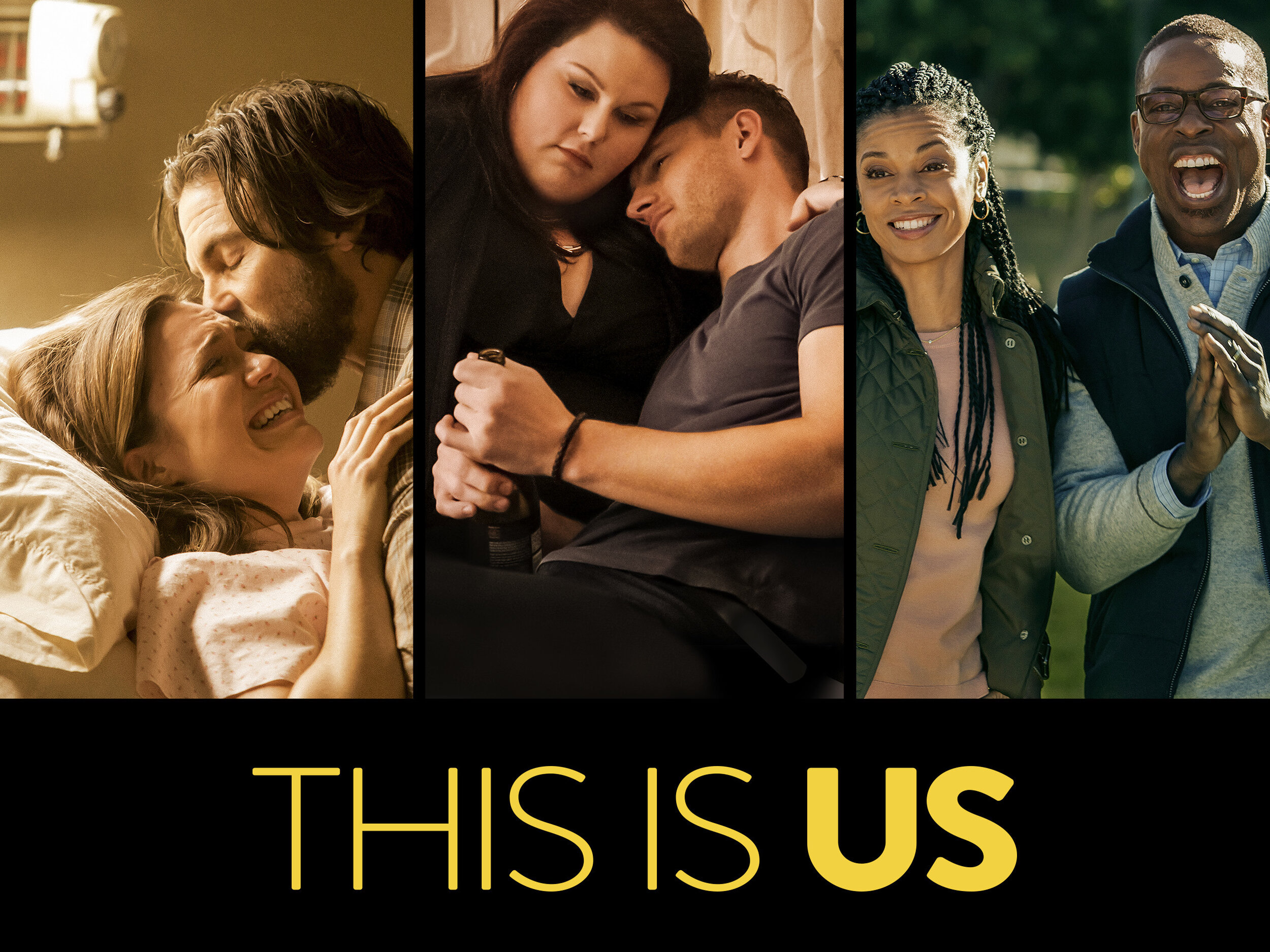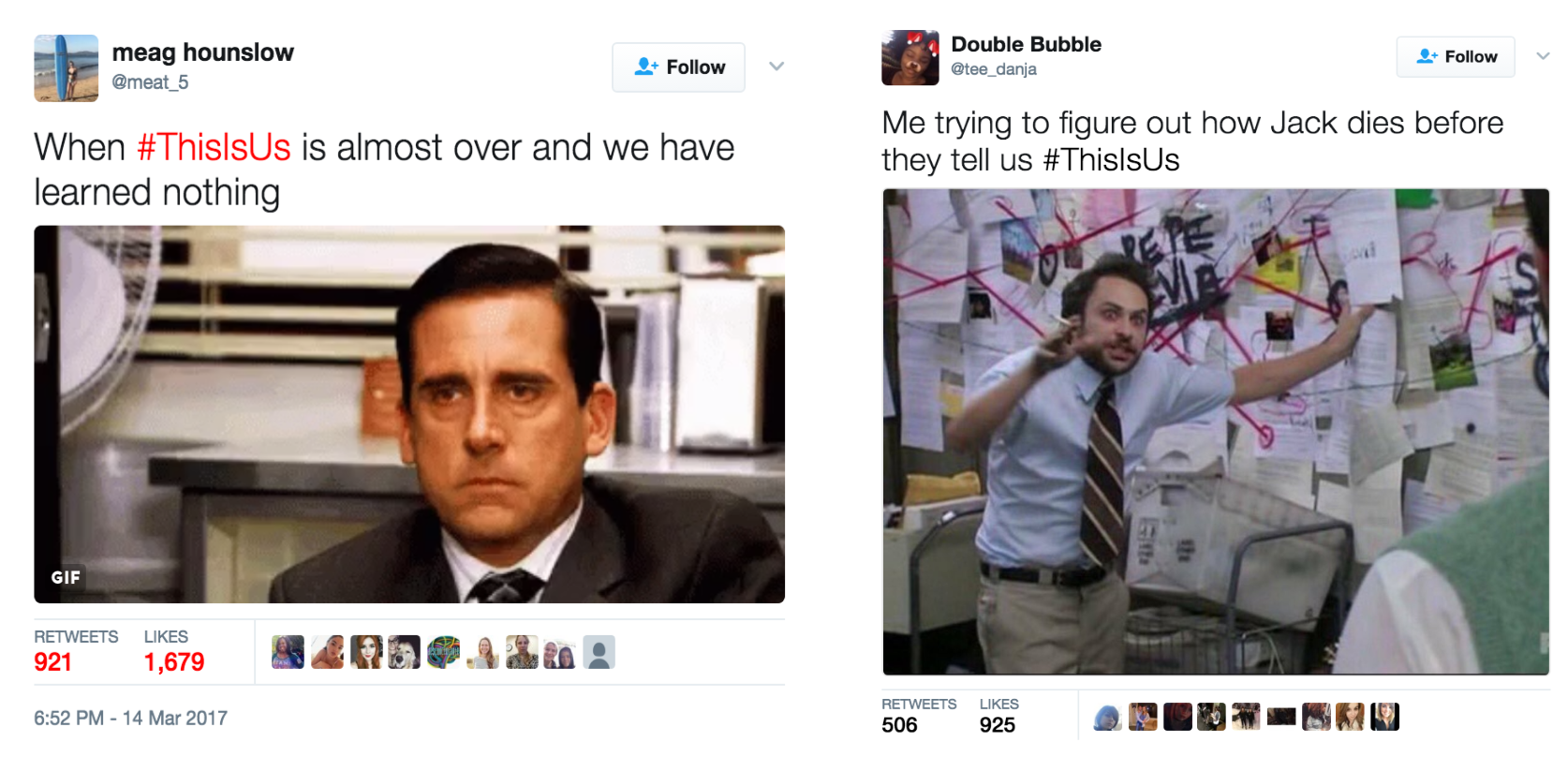
NBC x Nielsen

Role:
Analyst
Course:
COMM 427: TV Strategy-From Broadcasting to YouTube, Spring 2017
Tools:
Nielsen Social, MS Excel, MS Powerpoint
Team Members:
2 undergraduate students
Power of Word of Mouth
In conjunction with the academic material we were learning about the evolution of the TV industry, our class partnered with NBC and Nielsen to analyze organic and owned Twitter data of various assigned television show and how NBCUniversal can better promote them. Our group was assigned This Is Us, one of NBC's hottest shows on air currently. Each group presented their findings to key NBC executives at NBCUniversal Universal City location in late April 2017.
Nielsen provided us 6 weeks of data (6 episodes) from the Spring 2017 season. Because the show was doing so well, we decided to focus on the top three episodes from the given data and understand what made them successful. We used Nielsen Social to determine which episodes had the most social responses. Data we used were confidential between parties.
- RESEARCH -
Owned Tweets < Organic Tweets
The first thing we did with the data was separating organic and owned tweets and analyzing them separately in Excel. What we found was organic tweets had more significant impact compared to owned. This was most likely due to the fact people don’t think owned tweets are authentic, especially when they are promoted across the platform. Plus, people are bombarded by ads left and right everyday that they naturally tune them out, like shows being promoted on People or Buzzfeed for example. UNLESS the ad is something relatable, then it speaks volume.
Power of Word of Mouth
It is no secret the millennial generation is the generation of cord-cutters. We now have so many options on shows to watch and where we can watch them that it’s overwhelming at times to pick. This phenomenon is called the user’s dilemma.
More often than not, we are more likely—92% to be exact according to Nielsen—to trust sources we know, like our friends, family, classmates, coworkers, etc. across all different type of platforms. With this show in particular, it is such a powerful and emotional show that you cannot not talk about it.
In addition, when people see their “trusted” sources all talking about a certain thing, they want to be able to participate in it so they would not feel like they are missing out. So it is not surprising then that as more people talk about the show, the more popular it becomes, i.e. This Is Us.
The first thing we did with the data was separating organic and owned tweets and analyzing those separately in Excel. What we found was organic tweets had a more significant impact compared to owned. We concluded it's due to the fact we usually recognize owned tweets as sponsored, even though it might not be sponsored. Realistically, people watched shows because they heard good things about it from their friends or families. If you don't watch the show, then you're the odd one out; hence the power of the word of mouth.
Visual Aids DOES Make a Difference
Something we noticed while looking through the data was tweets that included some form of visual aid—whether it’s memes, gifs, videos, or images—tend to get more interaction (retweet and likes) than textual tweets. This made sense as these forms of media added another level of depth to the experience.

The organic tweets that tended to do well incorporated some form of visual aid, whether it was GIFs, funny images, or video. It made sense as these forms of media added another level of depth to the experience. What the show does so well was making it relatable to all different types of people and bringing to life the emotional turmoil that life threw at you. There had been numerous articles (here and here) listing the biggest tearjerker moments from the show.

- SUGGESTIONS -
Our group used the combination of word of mouth and media to come up with a solution. Since the shows was doing great, that meant the content was good and people were consistently watching the show. The next step was to get more people to watch it and become part of the fandom to gear up for the second season in the fall. If NBC had a fun viral campaign to encourage fans to submit their reaction videos while watching, it would be an indirect organic way of spreading the word. This would promote interactions within the fandom and help strengthen the community. In addition, when people start seeing their friends posting these videos, then they would get curious about the show and hopefully become a fan.
A Weekly Commitment to #FamilyNight
Borrowing the idea of #TGIT (Thank God It’s Thursday from ABC), my team suggested NBC can have their own version as #FamilyNight on a certain day of the week, where NBC can air shows that people could watch with their families or friends. This Is Us would be one of the three shows that airs during prime time on that day. While people are watching, they can tweet and use the hashtag, creating a Twitter trend and spreading the word.
Ideally, we want this to become a part of people’s routine, where they get together and watch TV on the day of #FamilyNight, just like how people do with #TGIT and Bachelor viewing parties. It creates a sense of community feeling within the groups, but also makes the fandom stronger as viewers are going through the same emotions as everyone who is watching. Though it might sound too good to be true, a research study we read from the Journal of Social and Personal Relationships found that when friends and significant others share media like TV shows, movies, or books with one another, it creates a sense of closeness. Some of the viewers are already watching the show with their family members, specifically their moms:

Embrace Visual Aids and Viral Campaigns
In the age of social media, people love their GIFs, memes, and new viral trends, whether it is challenges, dance moves, or reaction videos. As stated previously, numerous articles have been published talking about how the show is a tearjerker. We suggested that there could be a fun viral campaign where NBC encourages fans to submit their reaction videos about upcoming episodes to emotional moments. That way, it can promote interactions within the fandom and help build the community.
Chance the Rapper started a viral challenge called “So Gone” back in 2016. A domino effect followed, leading to numerous celebrities and fans posting their own videos. This brought attention to the original “So Gone” song and helped revive the classic. NBC can do something similar, where they can kickoff the campaign by working with celebrities, who are already fans of the show as seen on social media, and have them post their reaction videos. That way, it can also bring in new viewers who haven’t seen the show yet and viewers can use the off-air time to catch up.
- AFTERMATH -
Soon after our presentations, NBC released a video to get fans excited about the second season. Though NBC edited our suggestions a bit, the general idea was there. It was even better as the stars of the show surprised the shocked fans when they are pouring out their hearts on why they love the show. To see our suggestion come to life was beyond exciting and humbling. This was an amazing project and I am so blessed and honored to have the opportunity to work on this with my team, NBC, and Nielsen. Officially a fan of #ThisIsUs.
- REFLECTION -
Our group was an interesting case since the show was doing so well in its first season. Other groups had shows that were lagging so they had a more clear-cut situation. That said though, understanding why a show is losing steam is just as important as why a show is doing well. The writers and producers of this show was able to capture a certain audience in today’s endless option of shows. The best part was seeing NBC implementing our suggestions and knowing this project was not all for nothing.
Being that we were only provided six weeks of data, it would have been more comprehensive to look at more weeks. It would have been much larger dataset, but I would have wanted to look at data from when the show first aired and see how that has evolved as the show progressed. The first season of any show is tricky because there is no previous data to help guide the creative team on what the audience likes. It’s mostly on previous experiences and gut feelings. Either way, this was a fun project I thoroughly enjoyed.